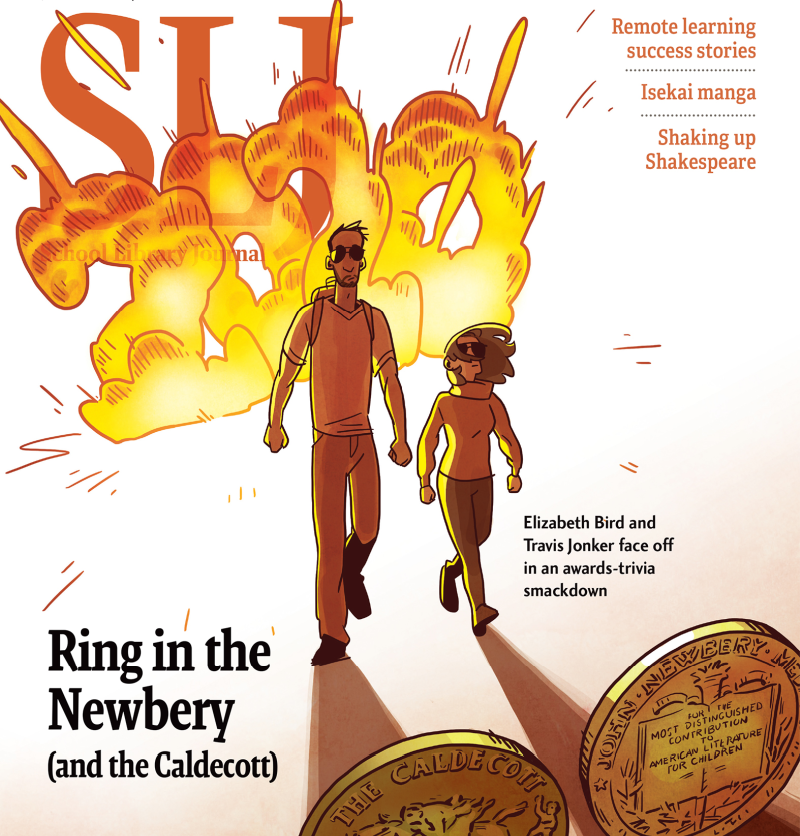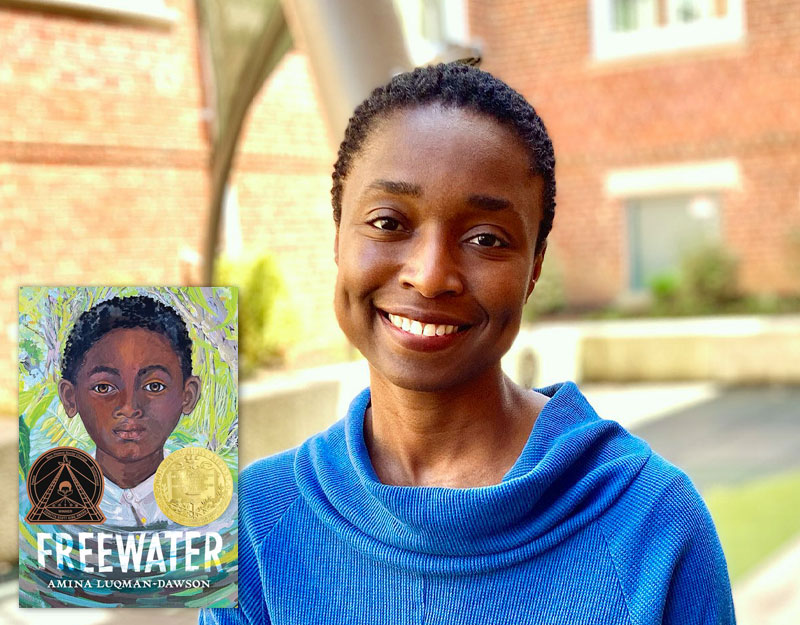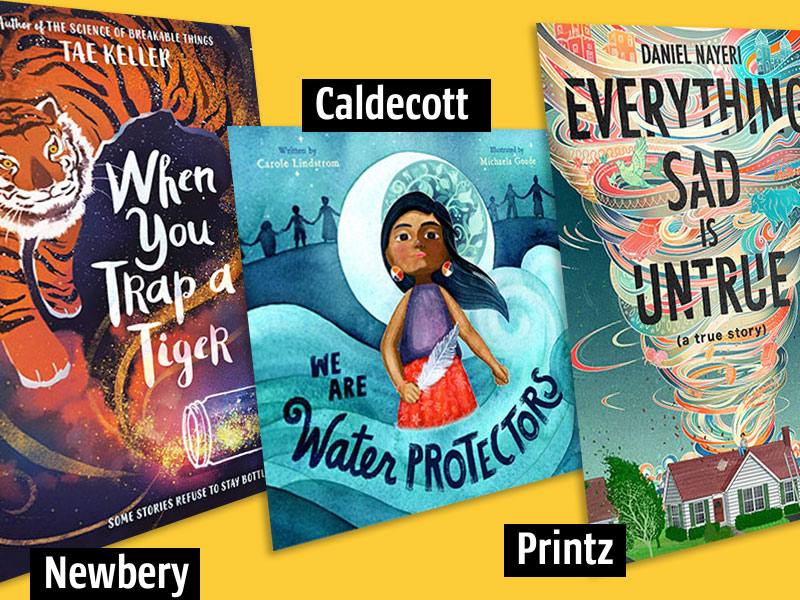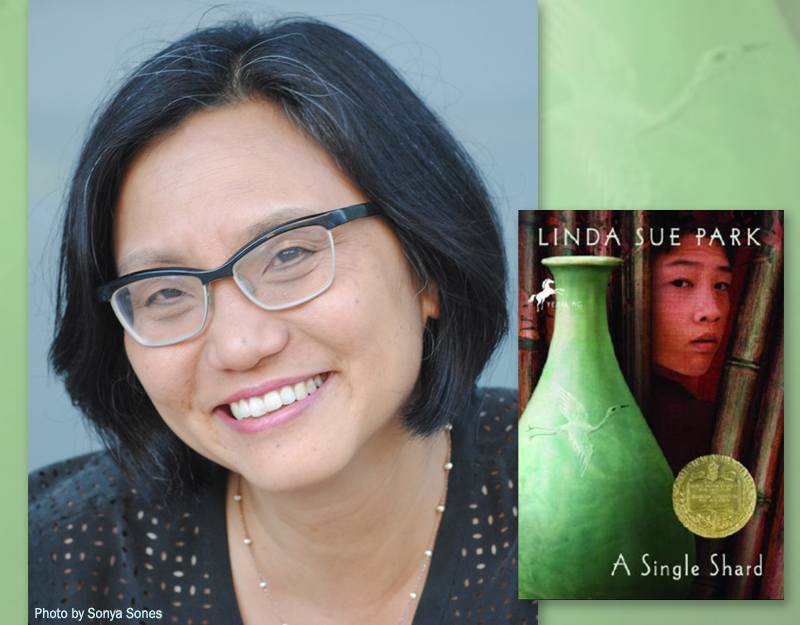Heavy Medal Mock Newbery Finalist: THE MANY ASSASSINATIONS OF SAMIR, THE SELLER OF DREAMS
Introduction by Heavy Medal Award Committee Member Kyra Nay:

Let this be a lesson.
You can’t disagree with a good story.
Or so argues gregarious, charming, resourceful Samir, silver-tongued purveyor of sand-logged bolts of wool, rings that turn men’s fingers green, and the finest cherry paste, with more combs than the Queen of Sheba and his noble steed Rostram, champion among donkeys.
In a series of misunderstandings and misfortunes, thrice-orphaned Monkey finds himself indebted to Samir and swept into the world of the Silk Road in the 12th century – a world of caravans, merchants, outposts, and bazaars with wondrous, exotic goods traveling from Turfan to Samarkand. In this world, as Monkey learns, everything has a price.
ADVERTISEMENT
ADVERTISEMENT
“In this world of roving markets, it seemed that life was a constant trade, And everything was inspected for its value….Even people were priced this way. Everyone had to be of use in some way.” (page 95).
No price is higher than the one on Samir’s head, for Monkey soon discovers that no less than 7 assassins are in pursuit of his new master. It will take all of Samir – and Monkey’s – cunning to survive.
In epic, descriptive prose, Nayeri captures scenes from the roving village of the caravan, dwindling away with each new assassination attack and the stark landscapes they travel through.
“The moon had quadrupled its value by the time we reached the outer edge of the haunted desert and dangled in front of us like a shiny coin”
pg. 122
As Monkey is relaying this story to unknown listeners, evoking great legends of human history from Gilgamesh to Beowulf, Nayeri makes effective use of asides to the reader like “which you probably know” or “you may have seen,” a subtle technique for explaining specific vocabulary like caravanserai (pg. 49).
With indelible characters, immersive scene-setting, and distinctive language, THE MANY ASSASSINATIONS OF SAMIR, THE SELLER OF DREAMS is a strong contender for the 2024 Newbery Medal.
I’d be especially interested in discussing two elements in comparison to other titles on our list:
- Monkey is one of several unreliable narrators on our Mock Newbery list – Ebony and De’Kari in EB AND FLOW, GG in THE LOST YEAR, and Simon in SIMON SORT OF SAYS. Did you find this element more compelling in this novel or in another text?
- Delineation of setting has been a strength in books we’ve already discussed – ALEBRIJES, THE EYES AND THE IMPOSSIBLE – and others to come. How does THE MANY ASSASSINATIONS compare in your analysis?
Filed under: Book Discussion, Heavy Medal Mock
About Emily Mroczek-Bayci
Emily Mroczek (Bayci) is a freelance children’s librarian in the Chicago suburbs. She served on the 2019 Newbery committee. You can reach her at emilyrmroczek@gmail.com.
ADVERTISEMENT
ADVERTISEMENT
SLJ Blog Network
Name That LEGO Book Cover! (#53)
Review of the Day: Being Home by Traci Sorell, ill. Michaela Goade
Exclusive: Vol. 2 of The Weirn Books Is Coming in October | News
Fighting Public School Book Bans with the Civil Rights Act
North Texas Teen Book Festival 2024 Recap
ADVERTISEMENT








I have liked reading Kyra Nay’s thoughts on all things HMAC. Incredible summary, and I think she really pinned down the strength of language with the phrase, “epic, descriptive prose.” I was distinct in that category, for sure.
After I read this book in July, my first thought was: Wow, that was very different from anything I read. The original setting and idea remind us that unique, magical perspectives can send us to another time and place.
The main character has a story arc that is told through many different events. In a time when bolts of silk were valued as much as a person’s life, the book highlights the importance of communication, adaptation, and the freedom to discover yourself. The occasional paintings were exciting and helped further the story.
In the past, traveling merchants were cultural emissaries. To be effective traders, they had to understand many cultures, languages, traditions, and landscapes. It is an excellent backdrop for this creative and original story. SAMIRS really is a SELLER OF DREAMS, a traveling narrator who passes on stories through oral tradition. The descriptions were engaging, and I enjoyed the description of different types of military, such as a Viking berserker, a Mongolian gunner, and a Bedouin clan. This book is a reminder that unique perspectives of history have the power to connect us all.
I specifically would like to address Kyra Nay’s call to comparison. All of the 16 books on the list are excellent contributions for 2023. I don’t want to diminish their light or importance. Read them all, because they are all exceptional! However, at this point, I am very interested in reading comparisons to help narrow down the choices that best fit the Newbery criteria. I really want to learn how this happens in the Committee.
My Comparisons:
*Delineation of setting- THE MANY ASSASSINATIONS OF SAMIR, THE SELLER OF DREAMS (2) is distinguished in this area. Compared to other great world-building, I list this book with ALEBRIJES (1), and THE EYES AND THE IMPOSSIBLE (3.) GONE WOLF is also notable in this category. THE SKULL takes me to the setting visually, putting the book in Caldecott contention. A FIRST TIME FOR EVERYTHING was exceptional in mixing dialogue and photos that brought parts of Europe to life.
*Unreliable narrators- a good topic for discussion. THE LOST YEAR (1) for its trifecta of narratives woven creatively that build the plot and characterization. SAMIR (2) memorably used literary misdirection. Reading the book was like listening to a dramatic counselor telling campfire stories that everyone wants to lean in and listen to, even though we know they may be hyperbole or untrue.
*Language- THE EYES AND THE IMPOSSIBLE (1) Incredible vocabulary and writing that was full of descriptive adjectives. Sentences like “she was one of my favorite creatures- a thing of rare grace and radical kindness.” The dialogue was also incredible. I loved the Animal protagonist, Johannes, who frequently indulges in bragging, offering humorous insights into his characters that are also funny. SAMIR (2) was full of expressive language that made the epic adventure come to life in a very distinct way. “Sometimes you tell a story the way Samir does, and then it goes and finds a way to become true.”
One of my favorite quotes that I wrote in my book journal is, “For a short second, I wondered if Samir had ever been a father. I wondered if the reason he loved kids was because his heart had already built a room for them.” My second reading, I felt the same way I did the first time. It’s really different than anything else. While it is not my top Newbery choice, it is a strong contender.
Quade – I’ve greatly enjoyed your perceptive and well-written insights as well!
Your comparison of the text’s tone to a camp counselor telling tales around a campfire is an apt modern analogy! I do agree that THE LOST YEAR’S use of an unreliable narrator in GG is perhaps stronger than Monkey, not just because Marsh is using it as a plot device to weave together timelines, but because it also works to underscore larger themes of disinformation in the novel, both the Communists hiding the Holodomor to Party members and the global community in 1933 and the immediate embrace of conspiracy theories and other disinformation campaigns from the start of the COVID-19 pandemic in 2020.
I have not served on the Newbery Committee, but I was a member of the 2022 Sibert Committee. In my experience, when you start identifying titles that are rising to the top in discussion, the points of comparison against the criteria really do push deliberations forward. Of course, nothing quite compares to the first round of ballots when you have to synthesize everything you’ve thought and heard from your fellow committee members and actually rank your top 3 choices. Again, speaking only for myself, my rankings were quite fluid in the final hour or so before we began voting as I weighed the differences and similarities between a number of impressive titles.
I read SAMIR back in May, and what stands out to me now is not plot or character, but the sharply observant and perceptive language, including some of the quotes mentioned above, and the setting. Nayeri (EVERYTHING SAD IS UNTRUE) brings a wry voice to middle grade, a different and unique sensibility that is distinct from others.
“But let this be a lesson: To everyone we love we give a knife.
The knife is shaped to pass through the bones of our chests like a key in a lock.
Nothing can cut our hearts so deeply.” (74)
“…I wondered if Samir had ever been a father. I wondered if the reason he loved kids was because his heart had already built a room for them.” (146)
“People want to tell you who they are, even when they are your enemies.” (156)
“He was the only person I ever met who didn’t dream of gold.
He dreamed dreams.” (185)
Monkey observes that Samir is a complicated person – like all people, neither wholly good nor wholly bad. I’m curious to hear about young readers’ responses to this one. Are kids picking it up and sticking with it? Is it a hard sell?
Jenny, I’d also be really curious to hear how kids are responding to this book – I haven’t personally had a kid at my library report back to me on it. We also have this shelved in Teen Fiction rather than J Fiction. I’m not sure why, I would not have made that choice. I’d be interested to learn where other libraries shelve SAMIR!
The point about a lot of unreliable narrators made me think a lot. That really is a theme this year and I didn’t realize it. It’s definitely a great comparison point between novels and I think they are all used so well. I find that because of Samir’s unreliability I got confused and frustrated by the book, but I am curious how child readers respond. i haven’t found the right person to recommend this to yet.
I really struggled to get into this book, and I do think something about the way the text was on the page contributed to that. It was a much wider trim size then my brain is used to for this kind of book–but I agree that the language was what soared here.
When we discussed Everything Sad is Untrue, I complained Nayeri’s writing felt “mansplain-y” to me. Many disagreed, but at least one other person got what I meant. I think SAMIR is a much better children’s book than Everything Sad, but some of what bothered me about the voice of that book also bothered me here. (Come to think of it, EYES affected me similarly. I admire distinctive style–I’ve often championed DiCamillo and Catherynne Valente here–but something about Nayeri’s and Egger’s writing feels off-puttingly attention-seeking to me.) Along those lines, I don’t know if the Bechdel Test applies to children’s literature, but it bothered me that the one and only important female character, Mara, felt consistently and only written as Monkey’s object of desire. And about her reveal–nothing about Mara and Smithy and their plans seemed remotely deserving of the Cid’s reputation to me. I do think the guts of SAMIR were strong, but I wish someone else (E.K. Johnston? Shannon Hale? Catherine Gilbert Murdock?) had written it. I think I commented elsewhere that I felt ONCE THERE WAS might be a comparable book that I preferred to SAMIR.
This was the hardest book for me to get into. I would read some and then still feel lost. I think that’s a bit of the unreliable narrator, but I just didn’t get this book. It was very abstract and not easy to pick up after putting it down for a few days. I don’t even know what the plot is – it’s definitely not linear. Like Emily, I have no idea who I would give this book to.
It took me quite awhile to get into “The Many Assassinations of Samir, the Seller of Dreams.” I felt so badly for Monkey, his childhood, his situation with the monks, and his predicament with Samir. It felt as if I was reading about one sad, depressing, or frustrating thing after another. Knowing the quality of the HMAC books I’ve read so far, and how each has been amazing in its own right, I made myself stick with it and I’m very happy that I did.
As with several of our other books, the setting was distinctive and integral to the plot. While the merchants and the history of the Spice Road are very real, there is still an element of world building to bring that environment alive for readers. Monkey’s narration, which I agree is a great example of the unreliable narrator, is firmly from his own perspective as he makes sense of the world and people around him. He feels that he understands Samir, he sees his flaws, and dislikes (maybe even detests) him for them. As the book goes on, Monkey comes to see that his traveling company are more complicated than he believed. Mara, who he saw as pure and good, turns out to be much less so. Samir, who he judged, turned out to have good intentions if maybe not good deeds.
I enjoyed this story, but I do agree with others who pointed out that it would be difficult to pinpoint an audience for this book.
Like Nayeri’s other book, this is difficult to put in a genre or age box. Undoubtedly, this is a distinct contribution to 2023’s youth literature, but distinguished? That said, the only book that comes to mind that is in any way similar is Gidwitz’s THE INQUISITOR’S TALE, which was awarded a 2017 Newbery honor. Unfortunately, I’ve seen that book sit on the shelf since then and left behind even if on display. Folks here have been talking about windows and mirrors in other books. MANY ASSASSINATIONS is all window for most of our readers which can also be a hard sell. On the other hand, I’m sure I’m not the only one who said, “12th century Korean potter?!” when SINGLE SHARD won, and turns out that book is stellar. This comment is all over the place, as is this book. It would certainly be an intriguing win, but it has the potential to be a shelf-sitter.